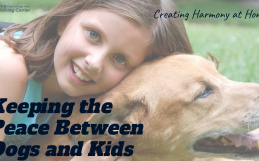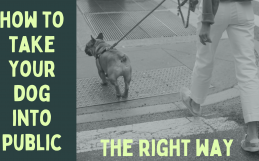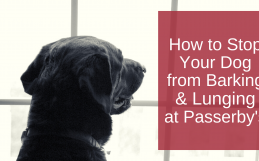Four Best Etiquette Tips for Your Dog
There are many ways a dog can be a nuisance to those around us. As much as we, the owner,
may love them, it takes a lot of work to make our pups into good neighbors. Consider the
following etiquette tips to help your dog become a polite companion.
Coral Your Pet
If you live in a home with a yard, you will undoubtedly want your pup to be able to enjoy that
space. Unfortunately, if you don’t have a fence, you may have a problem. With a fence, your
neighbors can relax, as they won’t have to worry about your dog scampering off and digging up
(or doing business in) their garden. While a chain link fence may be a tempting idea, it won’t
prevent your dog from digging up the ground and escaping from beneath. Choose something
that allows you the option of having the fence a few feet below ground level. If you live in an
apartment, it’s still important to make sure your dog has boundaries. One way to keep it from
barking at or scratching up shared walls is to crate train. This creates a happy, safe atmosphere
for your pooch to make it the best neighbor possible. It just takes a bit of work, and plenty of
treats, to get your dog to see the crate as a safe haven.
Curb Barking
It’s no secret that no one likes a dog that constantly barks, your neighbors included. This is
especially true if your dog is prone to barking at night. Fortunately, there are ways to train your
dog out of the habit. It’s important that, no matter how frustrated you are, you never yell at your
dog when it’s barking. It may think you’re barking with it, and continue this behavior. The key is
to find the balance between teaching dogs to learn right from wrong while also showing them
how to make good choices by themselves. Rather than avoid barking triggers, use it as a
teachable moment to train your dog to stop barking on command. Remember to stay consistent
to avoid confusion. Every time your dog barks inappropriately is a time where you need to step
in and be the guide.
Going Out and About
Think about when you go for a walk in the park. Do you like having to watch out for dog
messes? No one does, so make sure that when you take your dog out, you bring along waste
bags to clean it up. If you come into contact with another dog, don’t assume they’ll want to to
play. Always ask the owner if it’s okay to let your dog approach. It’s important to also teach your
dog not to approach without permission. The other may not be well socialized, and you might
cause an incident. This also applies to running into neighbors or friends. It may sound strange to
you, but not everyone loves animals. Until you get an okay, it’s best to keep interaction to
waving from a distance. Again, make sure you train your dog to not approach without your say
so. Be sure to cover all the bases of public etiquette for dogs, you can even do it at home.
Treats, clickers, toys, petting, and verbal praise are all great ways to learn. Every dog is an
individual with a unique personality and way of learning. If one learning method doesn’t work,
don’t get discouraged. Keep trying until you find what clicks.
Stimulate and Exercise
At the end of the day, a tired dog that spent hours being stimulated, and not bored, is a happy
dog. You can schedule your walks to reinforce routines, which dogs love and find calming. If a
dog knows exactly when it will get the chance to relieve itself, if it knows it will get stimulation by
being outside, you will have a better behaved pup. If a dog has oodles of extra energy and
hasn’t had the opportunity to explore the outdoors, it may begin to act up, not only by being
destructive inside, but by barking, which, again, can annoy your neighbors. By training your dog
through reinforcement of routine, you may have a better behaved pup.
When it comes down to it, we tend to love our pets unconditionally. Training isn’t a punishment,
and, often, having a set routine can help your dog behave well. A well-behaved dog is
important, not just for your own peace of mind, but for your neighbors’ too.
Article by:
Aurora James





